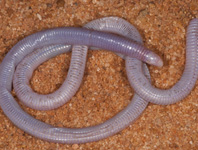Abstract
The Mumburarr Whipray, Urogymnus acanthobothrium sp. nov. is described from a single specimen taken from the Cambridge Gulf, Western Australia, and from images of 10 other specimens from northern Australia and Papua New Guinea (all observed but not collected). It is a very large ray that attains at least 161 cm disc width, making it amongst the largest of the whiprays. The ventral tail below the caudal sting has a low, short-based fold. A ventral tail fold (or a dorsal fold) has not been recorded for any other himanturin stingray in the Indo-West Pacific. Molecular data suggest it is most closely related to a similar but more widely distributed cognate, U. granulatus. Both of these species share a suboval disc shape, similar squamation patterns, and the tail posterior to the sting is entirely white (at least in small individuals). U. acanthobothrium sp. nov. differs from U. granulatus in having a longer and more angular snout, longer tail, more posteriorly inserted caudal sting, lacks white flecks on the dorsal surface, and the ventral disc is uniformly white (rather than white with a broad black margin). It co-occurs with two other morphologically distinct Urogymnus in the region (U. asperrimus and U. dalyensis). Like U. dalyensis it occurs in both brackish and marine waters. A key is proved to the members of the genus Urogymnus.
References
Bleeker, P. (1852) Bijdrage tot de kennis der Plagiostomen van den Indischen Archipel. Verhandelingen van het Bataviaasch Genootschap van Kunsten en Wetenschappen, 24 (12), 1–92.
Bloch, M.E. & Schneider, J.G. (1801) Systema Ichthyologiae Iconibus cx Ilustratum. Post obitum auctoris opus inchoatum absolvit, correxit, interpolavit Jo. Gottlob Schneider, Saxo. Berolini. Sumtibus Auctoris Impressum et Bibliopolio Sanderiano Commissum. 584 pp.
Brewer, D., Heales, D., Milton, D., Dell, Q., Fry, G., Venables, B. & Jones, P. (2006) The impact of turtle excluder devices and bycatch reduction devices on diverse tropical marine communities in Australia’s northern prawn trawl fishery. Fisheries Research, 81, 176–188.
http://dx.doi.org/10.1016/j.fishres.2006.07.009Compagno, L.J.V. & Heemstra, P.C. (1984) Himantura draco, a new species of stingray (Myliobatiformes: Dasyatidae) from South Africa, with a key to the Dasyatidae and the first record of Dasyatis kuhlii (Müller & Henle, 1841) from southern Africa. J.L.B. Smith Institute of Ichthyology Special Publication, 33, 1–17.
Compagno, L.J.V. & Roberts, T.R. (1982) Freshwater stingrays (Dasyatidae) of Southeast Asia and New Guinea, with description of a new species of Himantura and reports of unidentified species. Environmental Biology of Fishes, 7 (4), 321–339.
http://dx.doi.org/10.1007/BF00005567Fischer, W. & Hureau, J.C. (1987) Fiches FAO d’identification des espèces pour les besoins de la pêche. Océan Austral (zone de la Convention CCAMLR) (Zones de pêche 48, 58 et 88). Ouvrage préparé et publié avec l’aide de la Commission pour la conservation de la faune et de la flore marines de l’Antarctique. Traduction franaise: J.C. Hureau, R. Delépine (algues) et C. Ozouf-Costaz (mollusques). Volume 1. Organisation des Nations Unies pour l’alimentation et l’agriculture, Rome. xxiv, 234 pp.
Fyler, C.A., Caira, J.N. & Jensen, K. (2009) Five new species of Acanthobothrium (Cestoda: Tetraphyllidea) from an unusual species of Himantura (Rajiformes: Dasyatidae) from northern Australia. Folia Parasitologica, 56 (2), 107–128.
http://dx.doi.org/10.14411/fp.2009.016Last, P.R. & Stevens, J.D. (1994) Sharks and Rays of Australia. CSIRO, Australia, 513 pp.
Last, P.R. & Manjaji-Matsumoto, B.M. (2008) Himantura dalyensis sp. nov., a new estuarine whipray (Myliobatoidei: Dasyatidae) from northern Australia. In: Last, P.R., White, W.T. & Pogonoski, J.J. (Eds.), Descriptions of new Australian Chondrichthyans. CSIRO Marine and Atmospheric Research Paper, 022, pp. 283–291.
Last, P.R., Manjaji-Matsumoto, M. & Kailola, P.J. (2006) Himantura hortlei n. sp., a new species of whipray (Myliobatiformes: Dasyatidae) from Irian Jaya, Indonesia. Zootaxa, 1239, 19–34.
Last, P.R., Naylor, G.J.P. & Manjaji-Matsumoto, B.M. (2016) A revised classification of the family Dasyatidae (Chondrichthyes: Myliobatiformes) based on new morphological and molecular insights. Zootaxa, 4139 (3), 345–368.
http://dx.doi.org/10.11646/zootaxa.4139.3.2Lucifora, L.O., Carvalho, M.R. de, Kyne, P.M. & White, W.T. (2015) Freshwater sharks and rays. Current Biology, 25, R971–R973.
http://dx.doi.org/10.1016/j.cub.2015.06.051Macleay, W. (1883) Contribution to a knowledge of the fishes of New Guinea. No. III. Proceedings of the Linnean Society of New South Wales, 7 (4), 585–598.
http://dx.doi.org/10.5962/bhl.part.22766Manjaji, B.M. (2004) Taxonomy and phylogenetic systematics of the Indo-Pacific Whip-Tailed Stingray genus Himantura Muller & Henle 1837 (Chondrichthyes: Myliobatiformes: Dasyatidae). Unpublished PhD Thesis, University of Tasmania, 1 & 2, i–xxii, 607 pp.
Manjaji-Matsumoto, B.M. & Last, P.R. (2006) Himantura lobistoma, a new whipray (Rajiformes: Dasyatidae) from Borneo, with comments on the status of Dasyatis microphthalmus. Ichthyological Research, 53 (3), 290–297.
http://dx.doi.org/10.1007/s10228-006-0350-6Musick, J.A. (1999) Ecology and conservation of long-lived marine animals. In: Musick, J.A. (Ed.), Life in the slow lane: ecology and conservation of long-lived marine animals. Bethesda, Maryland: American Fisheries Society Symposium, pp. 1–10.
Naylor, G.J.P., Caira, J.N., Jensen, K., Rosana, K.A.M., White, W.T. & Last, P.R. (2012) A DNA sequence-based approach to the identification of shark and ray species and its implications for global elasmobranch diversity and parasitology. Bulletin of the American Museum of Natural History, 367, 1–262.
http://dx.doi.org/10.1206/754.1

